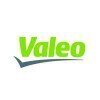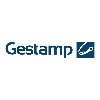Filter interviews by
Mikuni Interview Questions and Answers
23 Interview questions
Referencing Siemens CNC controls involves setting the machine's coordinate system for accurate operation.
Understand the machine's coordinate system: Familiarize yourself with the workpiece and tool coordinate systems.
Use the reference point: Set the machine's reference point (home position) to establish a baseline for operations.
Perform a tool offset: Adjust the tool length and diameter offsets to ensure precision...
The eight types of waste in lean manufacturing focus on eliminating inefficiencies to enhance productivity and value.
1. Overproduction: Producing more than needed, e.g., making 100 units when only 50 are required.
2. Waiting: Idle time when resources are not being utilized, e.g., workers waiting for materials.
3. Transport: Unnecessary movement of products, e.g., moving items across the facility multiple times.
4. Ex...
Implemented kaizen initiatives to streamline processes, reduce waste, and enhance efficiency in production workflows.
Conducted time-motion studies to identify bottlenecks in the assembly line, leading to a 15% reduction in cycle time.
Introduced standardized work procedures that minimized variability and improved training efficiency for new employees.
Implemented a visual management system using Kanban boards to tra...
A 'Why Why' analysis identifies root causes of problems by repeatedly asking 'why' to uncover underlying issues.
Helps in identifying the root cause of a problem rather than just addressing symptoms.
Involves asking 'why' multiple times (typically five) to drill down to the core issue.
Example: If a machine breaks down, asking 'why' could lead to discovering inadequate maintenance practices.
Encourages a systematic ap...
5S methodology enhances workplace efficiency through organization, cleanliness, and standardization.
Sort (Seiri): Remove unnecessary items from the workspace. Example: Discarding outdated tools.
Set in Order (Seiton): Organize tools and materials for easy access. Example: Labeling storage areas.
Shine (Seiso): Clean the workspace regularly to maintain a safe environment. Example: Daily cleaning schedules.
Standardize...
MHR is the rate calculated by dividing the total overhead costs by the total machine hours. Costing norms refer to the standard costs set for different activities.
MHR is calculated as Total Overhead Costs / Total Machine Hours
Costing norms are predetermined standards for costs of different activities
MHR helps in determining the cost of using machines for production
Costing norms help in setting benchmarks for cost ...
Major defects in plastic parts and their countermeasures
Major defects in plastic parts include warping, sink marks, flash, and short shots
Countermeasures for warping include adjusting mold temperature and cooling time
Sink marks can be reduced by increasing injection pressure and temperature
Flash can be prevented by optimizing clamping force and using proper mold design
Short shots can be avoided by ensuring proper ...
2 stroke engines are more powerful than 4 stroke engines due to their higher power-to-weight ratio and faster combustion process.
2 stroke engines have a power stroke for every revolution of the crankshaft, while 4 stroke engines have a power stroke every other revolution.
2 stroke engines have a simpler design with fewer moving parts, leading to less friction and more efficient power output.
2 stroke engines have a ...
There are two main types of brakes: disc brakes and drum brakes.
Disc brakes use calipers to squeeze brake pads against a rotor to slow down the vehicle.
Drum brakes use brake shoes that press against the inside of a drum to slow down the vehicle.
There are two main types of engines: internal combustion engines and external combustion engines.
Internal combustion engines: gasoline engines, diesel engines
External combustion engines: steam engines
Other types include rotary engines, electric engines, etc.
Mikuni Interview Experiences
26 interviews found
I appeared for an interview in Sep 2024.
(5 Questions)
- Q1. What were your job responsibilities in your previous position?
- Ans.
In my previous role as a Production Engineer, I managed production processes, optimized workflows, and ensured quality standards.
Oversaw daily production operations, ensuring efficiency and adherence to schedules.
Implemented process improvements that reduced production time by 15%.
Collaborated with cross-functional teams to troubleshoot and resolve production issues.
Conducted regular quality control inspections to main...
- Q2. How many personnel did you manage?
- Ans.
I managed a team of 10 personnel, overseeing their daily tasks and ensuring project goals were met efficiently.
Led a team of 10 engineers in a manufacturing project, coordinating schedules and tasks.
Implemented training programs for new hires, improving team productivity by 15%.
Conducted regular performance reviews, providing feedback and setting goals for team members.
Facilitated communication between departments to s...
- Q3. What is the purpose of a " Why Why" analysis?
- Ans.
A 'Why Why' analysis identifies root causes of problems by repeatedly asking 'why' to uncover underlying issues.
Helps in identifying the root cause of a problem rather than just addressing symptoms.
Involves asking 'why' multiple times (typically five) to drill down to the core issue.
Example: If a machine breaks down, asking 'why' could lead to discovering inadequate maintenance practices.
Encourages a systematic approac...
- Q4. What are the implications of the 5S methodology?
- Ans.
5S methodology enhances workplace efficiency through organization, cleanliness, and standardization.
Sort (Seiri): Remove unnecessary items from the workspace. Example: Discarding outdated tools.
Set in Order (Seiton): Organize tools and materials for easy access. Example: Labeling storage areas.
Shine (Seiso): Clean the workspace regularly to maintain a safe environment. Example: Daily cleaning schedules.
Standardize (Sei...
- Q5. What products did you assemble during your experience?
(2 Questions)
- Q1. What kaizen initiatives have you implemented to reduce time?
- Ans.
Implemented kaizen initiatives to streamline processes, reduce waste, and enhance efficiency in production workflows.
Conducted time-motion studies to identify bottlenecks in the assembly line, leading to a 15% reduction in cycle time.
Introduced standardized work procedures that minimized variability and improved training efficiency for new employees.
Implemented a visual management system using Kanban boards to track wo...
- Q2. Are you familiar with the concept of the eight types of waste in lean manufacturing?
- Ans.
The eight types of waste in lean manufacturing focus on eliminating inefficiencies to enhance productivity and value.
1. Overproduction: Producing more than needed, e.g., making 100 units when only 50 are required.
2. Waiting: Idle time when resources are not being utilized, e.g., workers waiting for materials.
3. Transport: Unnecessary movement of products, e.g., moving items across the facility multiple times.
4. Extra P...
(2 Questions)
- Q1. Are you willing to relocate to Neemrana?
- Ans.
Yes, I am open to relocating to Neemrana for the opportunity to grow and contribute as a Production Engineer.
Relocating to Neemrana aligns with my career goals and aspirations.
I am excited about the potential to work in a new environment and learn from different challenges.
I have previously relocated for work, such as moving to a different city for an internship, which helped me adapt quickly.
I believe that working in ...
- Q2. What are your salary expectations?
Interview Preparation Tips
I applied via Naukri.com and was interviewed in Jul 2024. There was 1 interview round.
(3 Questions)
- Q1. MHR (Machine Hour Rate) & Costing norms in detail
- Ans.
MHR is the rate calculated by dividing the total overhead costs by the total machine hours. Costing norms refer to the standard costs set for different activities.
MHR is calculated as Total Overhead Costs / Total Machine Hours
Costing norms are predetermined standards for costs of different activities
MHR helps in determining the cost of using machines for production
Costing norms help in setting benchmarks for cost contr...
- Q2. Import Processes such as CHA activity and freight forwarding activities
- Q3. Major defects in plastic parts and it's Countermeasure
- Ans.
Major defects in plastic parts and their countermeasures
Major defects in plastic parts include warping, sink marks, flash, and short shots
Countermeasures for warping include adjusting mold temperature and cooling time
Sink marks can be reduced by increasing injection pressure and temperature
Flash can be prevented by optimizing clamping force and using proper mold design
Short shots can be avoided by ensuring proper mater...
Interview Preparation Tips
I appeared for an interview in Apr 2025, where I was asked the following questions.
- Q1. About plc program
- Q2. How to refrence the Siemens control cnc
- Ans.
Referencing Siemens CNC controls involves setting the machine's coordinate system for accurate operation.
Understand the machine's coordinate system: Familiarize yourself with the workpiece and tool coordinate systems.
Use the reference point: Set the machine's reference point (home position) to establish a baseline for operations.
Perform a tool offset: Adjust the tool length and diameter offsets to ensure precision duri...
I appeared for an interview in Mar 2025, where I was asked the following questions.
- Q1. Incoming quality, process quality,
- Q2. Cmm operator, Zeiss operator, machine parts ki knowledge
I appeared for an interview in Nov 2024, where I was asked the following questions.
- Q1. Incoming quality, process quality,cmm operator, Zeiss operator
- Q2. Microscope, roundness tester, control plan,
- Q3. Spectrometer, contour,etc
Interview Preparation Tips
- Q1. Best experience in assembly line
- Q2. Multiple knowledge
I appeared for an interview in Aug 2023.
(2 Questions)
- Q1. Why are you change job ?
- Ans.
I am seeking new challenges and opportunities for growth that align with my career goals and aspirations in production engineering.
Desire for professional growth: I want to expand my skills and take on more responsibilities, such as leading projects.
Seeking a better cultural fit: My current workplace lacks collaboration, and I thrive in team-oriented environments.
Interest in innovative technologies: I am excited about ...
- Q2. What is your notice period?
(5 Questions)
- Q1. What is your KPI
- Ans.
My KPI as a Production Engineer is to ensure efficient production processes, minimize downtime, and optimize product quality.
Monitoring and improving production efficiency
Reducing downtime through preventive maintenance
Implementing quality control measures
Optimizing production output
Analyzing and improving production costs
- Q2. How to calculate OEE
- Ans.
OEE (Overall Equipment Efficiency) can be calculated by multiplying Availability, Performance, and Quality percentages.
Calculate Availability by dividing the total operating time by the planned production time.
Calculate Performance by dividing the actual production rate by the maximum production rate.
Calculate Quality by dividing the good units produced by the total units produced.
Multiply the Availability, Performance...
- Q3. What is 4M and what is retroactive & prospective
- Ans.
4M is a methodology used in production engineering. Retroactive refers to actions taken after an event, while prospective refers to actions taken before an event.
4M is a methodology used in production engineering that stands for Man, Machine, Material, and Method.
Man refers to the human resources involved in the production process.
Machine refers to the equipment and tools used in production.
Material refers to the raw m...
- Q4. What is base documents of control plan
- Ans.
The base documents of a control plan include process flow diagrams, work instructions, and quality standards.
Process flow diagrams outline the sequence of steps in the production process.
Work instructions provide detailed instructions on how to perform each step of the process.
Quality standards define the criteria for acceptable quality and specify the required inspections and tests.
Other base documents may include con...
- Q5. What is 5W 1H
- Ans.
5W 1H is a technique used to gather information by asking five 'W' questions and one 'H' question.
5W 1H stands for Who, What, When, Where, Why, and How.
It is commonly used in journalism, problem-solving, and project management.
By asking these questions, one can gather comprehensive information about a situation or problem.
For example, in a production engineering context, the 5W 1H questions could be: Who is responsible...
I appeared for an interview before May 2024, where I was asked the following questions.
- Q1. Total experience
- Q2. MSIL supply and kanban
(5 Questions)
- Q1. Like a My study related
- Q2. How many types of brake
- Ans.
There are two main types of brakes: disc brakes and drum brakes.
Disc brakes use calipers to squeeze brake pads against a rotor to slow down the vehicle.
Drum brakes use brake shoes that press against the inside of a drum to slow down the vehicle.
- Q3. How to work Piston
- Ans.
To work a piston, it must be properly lubricated and connected to a crankshaft to convert linear motion into rotational motion.
Ensure the piston is properly lubricated to reduce friction and wear
Connect the piston to a crankshaft to convert linear motion into rotational motion
Monitor piston movement for any abnormalities or malfunctions
- Q4. How many types of Engine
- Ans.
There are two main types of engines: internal combustion engines and external combustion engines.
Internal combustion engines: gasoline engines, diesel engines
External combustion engines: steam engines
Other types include rotary engines, electric engines, etc.
- Q5. Why 2 stroke engine is powerful than 4 stroke engine
- Ans.
2 stroke engines are more powerful than 4 stroke engines due to their higher power-to-weight ratio and faster combustion process.
2 stroke engines have a power stroke for every revolution of the crankshaft, while 4 stroke engines have a power stroke every other revolution.
2 stroke engines have a simpler design with fewer moving parts, leading to less friction and more efficient power output.
2 stroke engines have a faste...
I applied via Walk-in and was interviewed in Jun 2023. There were 3 interview rounds.
Its a basic electrical , aptitude, reasoning,math and English
The gd is performed between the groups
(2 Questions)
- Q1. Explain star delta connection?
- Ans.
Star delta connection is a method used to connect motors in electrical systems to reduce starting current.
It is used for starting large motors.
In star connection, the motor windings are connected in a star configuration, reducing voltage across each winding.
In delta connection, the windings are connected in a delta configuration, allowing the motor to run at full speed.
The switch from star to delta configuration is typ...
- Q2. Exaplain diode working?
- Ans.
A diode is a semiconductor device that allows current to flow in one direction only.
Diodes are made of semiconductor materials such as silicon or germanium.
They have two terminals - an anode (positive) and a cathode (negative).
When a voltage is applied across the diode in the forward bias direction, it allows current to flow.
In the reverse bias direction, the diode blocks current flow.
Diodes are commonly used in rectif...
Interview Preparation Tips
Top trending discussions






Mikuni Interview FAQs
The duration of Mikuni interview process can vary, but typically it takes about less than 2 weeks to complete.
Tell us how to improve this page.
Mikuni Interviews By Designations
- Mikuni Senior Engineer Interview Questions
- Mikuni Production Engineer Interview Questions
- Mikuni Quality Analyst Interview Questions
- Mikuni Production Supervisor Interview Questions
- Mikuni Purchase Manager Interview Questions
- Mikuni Maintenance Executive Interview Questions
- Mikuni R&D Engineer Interview Questions
- Mikuni Junior Engineer Interview Questions
- Show more
Interview Questions for Popular Designations
Overall Interview Experience Rating
based on 26 interview experiences
Difficulty level
Duration
Interview Questions from Similar Companies
Mikuni Reviews and Ratings
based on 425 reviews
Rating in categories
|
Senior Engineer
96
salaries
| ₹4.5 L/yr - ₹10.3 L/yr |
|
Engineer
83
salaries
| ₹3.5 L/yr - ₹6.6 L/yr |
|
Diploma Trainee Engineer
51
salaries
| ₹1.5 L/yr - ₹2.5 L/yr |
|
Assistant Manager
44
salaries
| ₹5.6 L/yr - ₹12.8 L/yr |
|
Junior Engineer
34
salaries
| ₹2 L/yr - ₹5 L/yr |

Bosch

Yazaki

Faurecia

Valeo
- Home >
- Interviews >
- Mikuni Interview Questions














